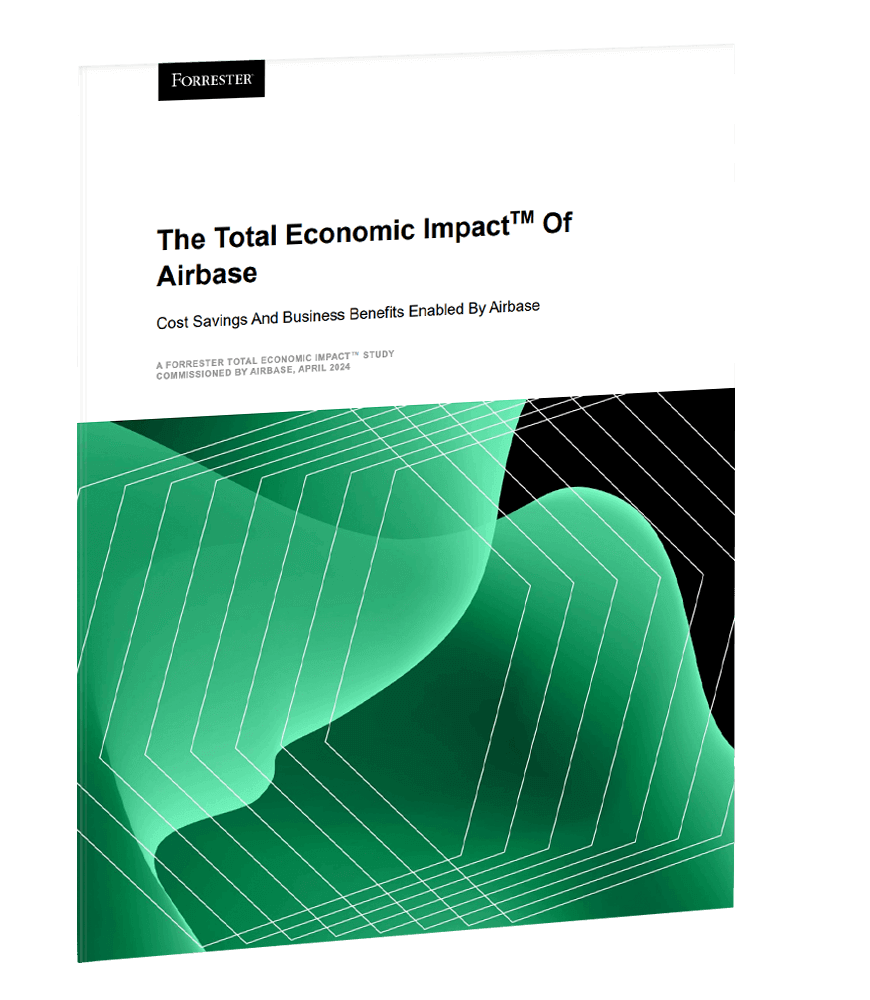Choosing the right ERP for your company requires a significant amount of due diligence, and arriving at the right choice demands a rigorous evaluation. However, while selecting a new ERP is a complex purchasing decision, it’s also an opportunity to define your business needs, audit your existing processes, and clean up your data. Selecting an ERP is a way to level up your business operations for the next stage of your company’s growth.
The investment in time to find the right ERP is well worth it: with successful implementation, moving to an ERP can have an overwhelmingly positive ROI. However, an ERP migration is an undeniably complex undertaking and often takes over a full year to complete. There’s also an element of risk: some ERP implementation studies estimate that up to 75% of businesses later viewed the migration as a failure. Avoiding this outcome means being methodical and thoughtful — here are some important things to think about.
1. Know when it’s time.
For many companies, the initial decision to move to an ERP is an obvious one. As they grow, small-business-focused accounting systems like QuickBooks and Xero begin to hinder growth and slow down the finance team. This is particularly true once a company needs to manage foreign currency transactions or create new subsidiaries.
Ask yourself, is our accounting system keeping up with the growing complexities of our company? If the answer is no, it’s likely time for an ERP.
When making a plan, it might be tempting to hold off on all other financial stack implementations until your new ERP is firmly in place. However, your company may be better served by continuing to add other systems that you know you’ll want in conjunction with your future ERP. Transaction software like AP or AR platforms can save your team significant amounts of time that can be shifted to ERP migration efforts.
At Airbase, we’ve helped scores of our customers migrate their spend data to a new ERP, and they’ve all told us they’re glad they didn’t wait for their new ERP upgrade to improve other processes.
2. Assess your current and planned offshore business operations.
Although adding subsidiaries and foreign currency transactions is a top reason why companies implement an ERP, not all ERPs support that kind of expansion out of the box. For example, the need to support international business requirements is a key differentiator between NetSuite and Intacct. Take a look at a comparison:
Also consider how capable an ERP is of supporting local regulatory requirements. NetSuite has an advantage over Intacct because of its localized reporting features, although these can be added to Intacct. NetSuite also offers a full suite of automatic tax filings, while Intacct doesn’t support tax requirements outside of the U.S.
3. Determine your business requirements.
Every business is different, so each one will have different requirements. Identify the workflows that generate data that needs to be captured in your GL and the operations that an ERP must handle. Do you need to support domestic and international subsidiaries? Do you have a lot of physical inventory to book? As you look at your operations, that list will get pretty long, so organizing it will make it more valuable in this process. Here are some key considerations:
- Segment your list into core and secondary business requirements. The first will help you narrow your possible vendor list, and the latter will help you evaluate differences at the feature level.
- Prioritize each requirement.
- Clearly define the scope of the project based on your requirements.
4. Research ERPs that best match the nature of your business.
The popular review site G2 offers a list of over 500 ERP solutions. The list can be filtered by a variety of factors including market segment and product features.
As the list makes obvious, each ERP on the market has distinct functionality, and there are some key differences to be aware of. As an example, consider two of the top ERPs for mid-market to enterprise businesses: Oracle NetSuite and Sage Intacct. Both are cloud-based with multitenant architecture. However, NetSuite’s features have more breadth with regard to other aspects of running a business besides accounting and include things like CRM functionality, manufacturing, e-commerce, HCM (Human Capital Management), and business intelligence.
In contrast, the focus for Intacct is more geared toward accounting and finance, with applications for purchasing, AP, AR, order management, and reporting. Integrations are available to solutions that fulfill other business functions, thanks to a flexible API.
The type of industry could also influence your decision. I’ve observed that NetSuite is often a good fit for service-based companies or businesses that are project-based, thanks to its time-tracking and expense-tracking features. NetSuite is also well-suited for companies within the software and manufacturing industries. Generally speaking, Intacct serves more businesses in the healthcare and real-estate industries than NetSuite.
5. Research users’ experiences.
Reading consumer reviews will help you understand the strengths and weaknesses of each ERP on your list. G2 offers a variety of comparison tools, including a list of the top 20 accounting software programs.
As reviews demonstrate, each platform has its own strengths and weaknesses. Below is a chart based on G2’s reviews showing the top-ranked ERPs out of Oracle NetSuite, Sage Intacct, and SAP, in some key areas:
This chart shows the areas where each of those ERPs received the highest and lowest ratings:
6. Determine your budget.
This involves more than comparing sticker prices, since the ultimate cost of an ERP can take some work to determine. You want to consider:
- Cost to acquire. Be sure to look at the cost of any integrations needed to meet your business needs. Some out-of-box ERPs might require more integrations with other solutions than other ERPs.
- Cost to get it up and running. Due to the complexity of an ERP migration, most businesses hire consultants to manage the process.
- Cost of customizations. Many businesses prioritize customization when selecting an ERP, particularly if their business processes don’t align with standard practices in their industry.
- Maintaining the application. Don’t just think of the short-term costs. How much maintenance does each ERP require? Some providers charge for certain levels of post-implementation support.
7. Evaluate the necessary integrations.
Most ERPs claim comprehensive capabilities, yet few companies use an ERP as an end-to-end solution. As part of your research, determine which advertised capabilities are really only surface-level solutions. If a feature falls short of your needs, evaluate integrations that can fulfill that function.
In general, ERPs are not considered strong at transactional work. To compensate for this, an ERP can integrate with solutions like Airbase’s spend management platform, payroll systems, and AR systems to manage the details and requirements for various types of transactions. When those solutions have a seamless integration into the ERP, the ERP can serve as a single source of truth for all financial information without compromising performance and user experience.
If these integrations are important, you’ll want to choose an ERP that works with them. Most software solutions will only integrate with a few key ERPs.
8. Look to the future.
Future-proof your business by considering what you want your ERP to do down the road. Do you plan to increase the complexity of your supply chain management? Add subsidiaries? Ripping and replacing an ERP is not an easy task, so start to plan now to prepare for what lies ahead.
Similarly, consider the future plans of the ERP vendors you’re evaluating. Many vendors will share their roadmap so you know what’s coming up. If an ERP vendor doesn’t have a feature you need now, don’t hesitate to ask if it’s anticipated. Your feedback could even influence the roadmap.
9. Find the support you need.
Finding and selecting the best implementation consultant for your needs is also a key step. As part of your purchasing research, identify the support available to you for each ERP you’re considering. Having a strong consultant can make or break your migration.
Look for a consultant who knows your industry, your accounting software, and your localization needs. If you work with an accounting firm, they may be able to help you find someone who is a good fit. You can also seek referrals from networking resources, like Airbase’s Off the Ledger Slack group.
When migrating to an ERP, you’ll work with vendors like Airbase to transfer all data from your old system to your new one. At Airbase, we work closely with our customers to ensure a smooth transition to their new ERPs.
Jason Lopez, Controller at Lattice, was pleasantly surprised by their migration from Airbase to their new ERP. “It was really quick and painless,” he says. “The transactions were flowing in that day to NetSuite. The new chart of accounts was there, the new vendors were synched. That was a relief given the level of complexity involved. I don’t know what went on in the background, but it worked.”
To help with a seamless transition, make sure you give your vendors plenty of warning that you’ll be migrating so that they can set up a plan and schedule the right resources.
This process will also present an opportunity to evaluate your foundation, starting with a look at your full chart of accounts. Now that your business has matured, you’ll have a better idea of the structure that will best fit your business moving forward.
10. Kick the tires early — user experience matters.
Once you answer the questions above, you should be able to match your core business requirements with the various vendors that are possible fits for your business. If a vendor seems to fit your needs, schedule a demo so that you can see the product in action. User experience is an important consideration, and it’s something you can only really grasp with a product demo. Your initial engagement may help you narrow your list.
Airbase is happy to show you how Airbase integrates with Intacct and NetSuite.
A good plan paves the road to success.
Selecting the right ERP is a critical business decision and will take time. Central to the process is a successful mapping of your company’s needs and preferences to the capabilities of the various vendors. Because an ERP impacts every aspect of your business and will be relied upon as your single source of truth, getting it right is paramount. But the failures in this process come from not running a good process upfront. Make sure you approach this effort in a comprehensive step-by-step manner so that you can get the greatest value from whatever ERP you select.
Airbase is a NetSuite SuiteCloud Developer Partner.
 Jira Integration – Streamline Your Workflows
Jira Integration – Streamline Your Workflows  Ironclad Integration – Simplify Legal Operations
Ironclad Integration – Simplify Legal Operations  Asana
Asana 




